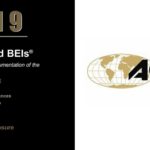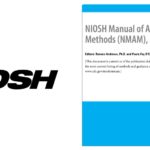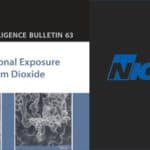
Sampling Guide for Air Contaminants in the Workplace – 8th Edition
Institut de recherche Robert-Sauvé en santé et en sécurité du travail – IRSST
This guide on sampling strategy is based on American and European procedures, condensed and adapted to the context of the Québec occupational health and safety network.
It reminds users that a representative result is obtained by using a realistic strategy, adapted to the objectives of an intervention and backed up by appropriate statistical treatment.
All of the steps must be subject to a quality assurance program, and certain steps to a quality control program.
Whether the objectives are preventive ones, such as those pursued by most occupational health professionals, or compliance with the ROHS or ROHSM as formulated by the inspection network of the Commission de la santé et de la sécurité du travail (CSST, Quebec occupational health and safety board), the objective of the proposed strategy is to verify contaminant concentration levels in relation to reference values.
These values are either time-weighted average exposure values (TWAEVs), adjusted mean exposure values (AMEVs), short-term exposure values (STEVs), ceiling values and excursion limits established by the ROHS, or simply reference values adopted as guidelines for preventive or corrective action.
For example, professional organizations such as the ACGIH® (American Conference of Governmental Industrial Hygienists), governmental agencies, or other different sources propose reference values.
In this guide, we will use the term “reference value” to cover all of these target values.
This strategy does not apply directly to epidemiological or toxicological studies.
It applies to actions such as preventive reassignment, work refusal, complaints, and the setting up of a health program specific to the establishments only if one of the intervention’s objectives can be linked to the verification of the concentration levels of one or more contaminants in relation to a reference value.
This guide includes a first section on the sampling strategy.
The second part describes concisely the different evaluation techniques that can be used in an occupational hygiene procedure based on the nature of the substances: gases and vapours or aerosols.
It is important to note that some of these techniques are exploratory and are not standard IRSST methods.
Also, evaluation techniques are given for microorganisms even though they are not regulated in Québec.
This part also contains information on the analysis of bulk samples and on the calibration of the sampling system.
The third part specifies the sampling and analytical methods for each of the substances listed in Schedule I of the ROHS.
It also contains information on the sampling and analysis of a limited number of non-regulated substances, but still offered in the framework of the analytical services of the IRSST’s laboratories.
Sampling Guide for Air Contaminants in the Workplace – 8th Edition




